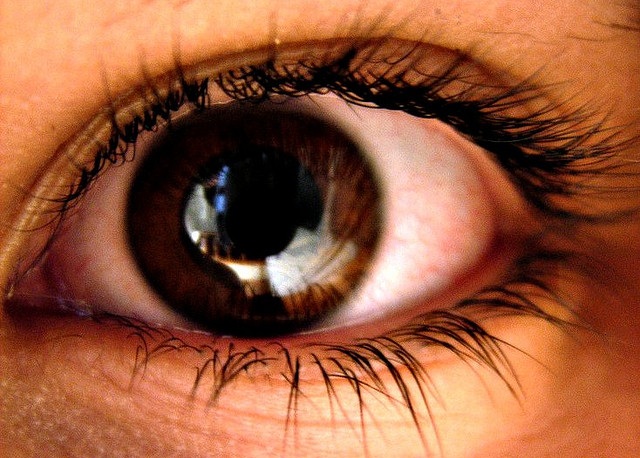
At this time of year, with new growth laying a haze of green over the wet fields, the farm country around this small town smells faintly but distinctly of manure. It’s a rich, warm aroma, appropriate to the place that bills itself on road signs as “Canada’s foremost cattle county.” But follow the dip in Hwy. 4 over the Saugeen River and down into Walkerton, and the smell changes noticeably. It is acrid and ammoniac. It hits you in the back of the nose, and it is weirdly familiar. It smells like a swimming pool. It’s bleach. All the people living in Walkerton, and most of the objects out in public—doorknobs, store counters, cafe tables—have been washed or swabbed with a potent mixture of chlorine bleach and water, the most effective way to kill the bacterium that has contaminated their water system and invaded their lives.
— “Ontario Town Battling Bacteria, Fear,” by Maryn McKenna for The Atlanta Journal Constitution, May 30, 2000
When Maryn McKenna began writing a series of newspaper stories on a Canadian E. coli epidemic for the Atlanta Journal Constitution more than a decade ago, she was surprised by the number of readers who connected with this small Ontario town through her articles and who wrote her to say, “You made me feel like I was there.”
They didn’t relate to the feeling of living in a town where the local aquifer’s fluid dynamics were particularly unique, or to the reasons for the epidemic. But everyone knew what bleach smelled like.
Memorable science stories captivate not only because they hold our intellectual attention, but also because they grab us by the senses, weaving smell, touch, and taste through abstract concepts like the epidemiology of bacterial infections. At a session at the Santa Fe Science Writing Workshop in May, 2012, Maryn McKenna shared tips for gathering and including such details to make for more vivid science reporting. To explain the need for such detail, she drew a parallel between science reporting and semanticist (and later congressman) S. I. Hayakawa’s ladder of abstraction, explaining why these concepts are so powerful and why it is so important for a science writer to think about using them.
In the 1930s, Hayakawa proposed that we process experience with the help of what he called the ladder of abstraction. He drew it as a literal ladder, with very concrete details at the bottom and very abstract ones at the top:
- At the top is God, and at the bottom are worn rosary beads.
- At the top is War, and at the bottom is blood on a doorstep.
As science writers, we spend a little time at the top of the ladder—evolution!—and a whole lot of time in the middle, which is where concepts and data and explanations live. “What sensory detail does is to drop us like a plumb line to the bottom of the ladder, down to the place where people’s attention is engaged. Once we do that we can bring them back up the ladder again,” McKenna said. “Rarely does science writing get right down to these bottom levels and engage a reader’s senses and emotions.”
Stories that incorporate these bottom-rung sensory details transport us—whether it is into towns being decimated by an epidemic, into dark caves filled with dying bats, into a Canadian distillery town beset by a mysterious fungus, or into the world of an octopus, where intellect is inextricably linked to touch and taste.
How do writers report and use sensory detail to create vivid stories?
“Notice what you notice, and write it down,” McKenna says. “If it’s not in the notebook, it’s not in the story. Capture every kind of detail—the more the better.”
Don’t wait to write down the details that impress you the most, adds Michelle Nijhuis, whose 2011 Smithsonian story “Crisis in the Caves” won an Outstanding Article award from the American Society of Journalists and Authors. “I’ve been in many situations where I’m having such a vivid experience that I’m sure I’ll never forget it,” she says. “But then sure enough, the next experience is just as vivid and I forget the first one. Even if you think you will remember something forever, write it down.” As an alternative, she also suggests talking to oneself. “I know some people who will talk to themselves into a recorder at night in their tents while in the field,” she says.
McKenna also recommends a phone camera to take quick snapshots and capture visual detail to include in words later. Wired magazine editor Adam Rogers, who won the Kavli Science Journalism award for his 2011 story “The Angel’s Share,” about a mystery fungus in a distillery town, also takes pictures while reporting to add scenes to a story. But, he suggests, “Smell and taste can be captured better by writing than by any other media. A camera can’t capture chemical sense detail the way writing can, and I think it’s more efficient to capture a scene with smell and taste rather than something visual. Stories almost always have art and pretty pictures to go with them, but we rely on the text to convey these chemical senses.”
Author and broadcast journalist Sy Montgomery has reported stories from cloud forests and a canoe on the Amazon River, and still relies on her notebook more than anything else. “I will use a recorder in the field, but my notebook travels everywhere with me,” Montgomery says. “Also, I had an orangutan eat my tapes once, and I was really glad I had my notes then. Nothing has tried to eat my notebook.”
Once details are written down, photographed, or otherwise recorded, how do these writers decide which nuggets to include and which to discard? Not every detail needs to be included with every story. For her 2011 Orion story “Deep Intellect,” on the octopus’s intellect, Montgomery spent several days in an aquarium, where everything either “smells like a fish or is a fish.” But since her story was about chemosensory receptors for touch and taste, the smell of an octopus seemed irrelevant. “On the other hand,” she adds, “it was important to me to convey to readers the precise temperature that the octopus lives in. My hands were too cold to write when I took them out of the water, but the octopus senses everything at this temperature.”
McKenna advises that writers only use details that add to their stories and characters: “Angle them towards the subject to make them count.” Rogers concurs that not all details work, citing the all-too-ubiquitous researcher profiles that describe a professor wearing a “professorial sweater” in his office at the end of a hallway in a university building. “This tells me nothing about why I should care about this person. Spare me these cheap details,” Rogers says. Along with avoiding the obvious, Rogers also advocates staying away from far-fetched analogies that a reader can’t necessarily relate to. “Don’t tell me something felt like hang-gliding,” he says.
Instead, Rogers suggests using metaphors “to add a pop at the end of a technical explanation, rather than as a crutch to prop your scientific explanation up.” In “The Angel’s Share,” he describes scientists shaking their heads over a misclassified fungus “like a plumber shaking his head over a homeowner’s attempt to patch a leaky pipe.”
Nijhuis sometimes seeds metaphors in the field to see if they take hold with her sources. “Sometimes, I’ll just make a statement out loud—like ‘this animal feels like a fancy sweater’—and the people I’m with build off that and give me more material to work with,” she says. To describe the feel of an octopus’s suckers on her hands, Montgomery turned to metaphor, likening the experience to “an alien’s kiss—at once a probe and a caress.” Octopuses are slimy, she explains, but she wanted to stay away from words typically associated with disgust. “I wanted to convey the delight that I felt to be touching an octopus, and it was important for me to be in the narrative to clarify that these are my perceptions,” she says.
Like many sensory experiences, delight in an octopus’s touch is a subjective emotion, largely dependent on the writer. Montgomery resolves this by using a first-person narrative. Nijhuis emphasizes that recording personal experience is critical, even when the writer is not in the story as directly. “When I was standing in the cave, I was observing my own reactions as well,” she says. “Did I feel cold? Was it damp? Even on the phone, your impressions of the person at the other end are important to the angle of your narrative.”
Rogers adds that smell, touch, and all other sensory details are subtle ways in which writers put themselves in the story, but posits that this is a contract between the writer and the reader. He says, “To me, it is like promising the reader I will take him into this journey, like telling them that we’re in this together, and watching what unfolds as the story progresses. This is why we still send reporters out into the field instead of doing everything on the phone or email, because at the end of it, we still want to feel what a person experienced while they were there.”

Jyoti Madhusoodanan is a freelance science writer who has written for the DOE Joint Genome Institute, The Tech Museum at San Jose, and California magazine. She lives in the San Francisco Bay Area. Follow Jyoti on Twitter @smjyoti.


